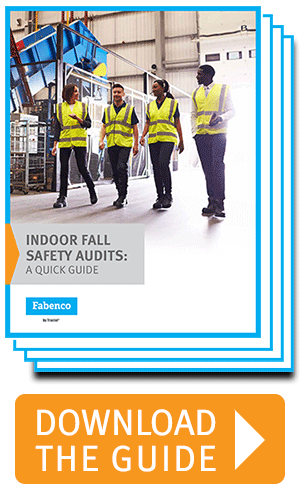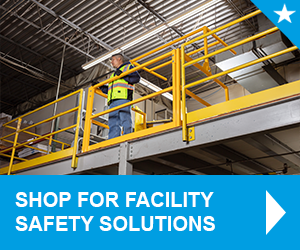
If you’re a safety officer or facility manager, you’re likely already familiar with the workplace health and safety rules found in both the OSHA 1910 and 1926 safety standards. However, the lines between the two sometimes blur, and it can be difficult to determine which fall safety measures to follow. It can also be a challenge to sift through both to reveal their differences. Even relatively simple things, like knowing when to use safety gates, can pose a challenge.
OSHA 1910 vs OSHA 1926
To put it simply, the OSHA 29 CFR 1910 regulations detail general industry safety regulations and apply to most worksites. Alternately, the OSHA 29 CFR 1926 standards focus on the construction industry, and identify the specific work-related risks associated with it. This makes sense, as construction has distinct environmental and job hazards not commonly found general worksites.
While fall safety is a concern across all industries, it is of particular concern for construction. (In fact, OSHA recently presented an industry-wide safety campaign that specifically covers fall protection in the construction sector.) Out of 991 total construction fatalities in 2016, 370 were fatal falls to a lower level. It’s no surprise that knowing the fall safety rules, like when to implement safety gates or other recommended fall protection systems, are a major priority for construction to prevent senseless injuries and deaths.
Of course, fall safety is also a general concern as well. In fact, the 1910 standards have many portions that address fall prevention in certain working conditions, such as walking/working surfaces, powered platforms, mezzanines, and loading docks. While these standards apply to employment sectors in all industries (including construction), they do not – and should not – override the specific 1926 construction guidelines. Construction industry guidelines were put in place to address the specific hazards found on the job, as well as those that occur while using the heavy construction equipment.
Similar, But Not Interchangeable

Knowing Which Standard to Follow
Both standards state that using fall protection, like loading dock safety gates, must be provided for employees when walking or working surfaces are located above ground level (as loading docks and mezzanines are). But, notably, the 1910 guidelines state that fall safety systems must be in place for edges four feet above the lower level, while the 1926 industry standard is six feet. For both industries, either a guardrail system (typically with safety gates), a safety net, or personal fall protection system can be used.
Confusion often arises when a general industry facility is renovating. While construction may not be top of mind for a safety manager in a manufacturing facility undergoing renovation, the construction rules do apply. As OSHA states on their site:
“OSHA’s regulations define construction work as “construction, alteration, and/or repair, including painting and decorating.” Section 1910.12(a) further provides that OSHA’s construction industry standards apply “to every employment and place of employment of every employee engaged in construction work”
Comparing Fall Protection for OSHA 1910 and 1926
For both industries, it is the duty of the employer to have suitable fall protection systems in place wherever a fall hazard exists. For example, for manufacturing and retail operations, this means that loading dock safety gates should be provided for loading areas that exceed the threshold heights shown below. Industrial facilities that use forklifts and other large machinery may require extra wide safety gates to facilitate large materials while still providing adequate fall protection. To get an idea of the variables you might encounter, here are some of the ways the two standards compare:
- Threshold Height: Fall protection is required above 4 feet (1910) versus above 6 feet (1926)
- Guardrails: The top edge of the railing shall be 42 +3/-1 inches high and withstands a force of 200 lbs – this applies to both 1910 and 1926.
- Safety Gates: Both the 1910 and 1926 make specific mention that self-closing gates should be used at guardrail openings, with the 1910 specifying their use around floor holes and points of access, while the 1926 calls out their necessity at hoisting areas.
- Work Platforms: A railing is required when working over 4 feet above the ground level (1910) versus above 6 feet (1926).
- Safety Net Systems: This is not addressed in 1910, but 1926 requires that safety net systems are installed as close as possible under the walking/working surface, but not lower than 30 beneath.
- Personal Fall Arrest Systems: Both 1910 and 1926 state that the maximum free fall distance is 6 feet, with a maximum arresting force of 1,800 lbs to prevent a person from making contact with the lower level.
Applying OSHA 1910 versus OSHA 1926
According to OSHA, it’s the responsibility of the company’s safety managers or facility maintenance teams to apply the safety standards accurately. While all workplaces must adhere to the minimum standards found in 1910, construction sites default to 1926. One of the best ways to help you make sense of your particular needs is to partner with a reputable safety equipment manufacturer. A good manufacturer can help your business conform to OSHA standards with confidence. If you need help sifting through what standard may apply to the job you have at hand, give us a call. We’re happy to help.










